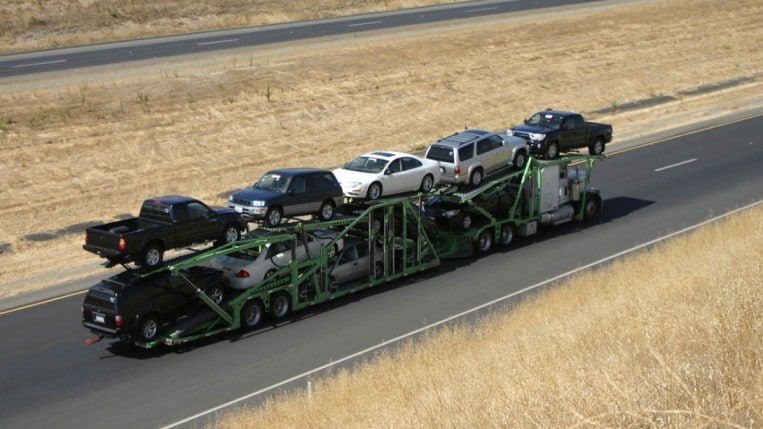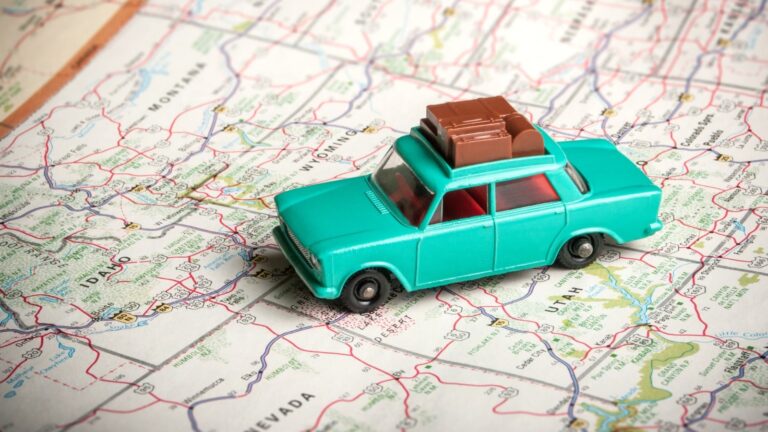Buying a Car Out of State Quick Tips
- Some states might have less demand and better prices for vehicles with specific features, such as convertibles in cold regions.
- Sales tax is paid in the state where you register the car.
- Buying a car in another state might bring factory incentives not available at your local dealership.
- Remember to include transportation costs when deciding if the vehicle is a good value.
Due to continuing supply chain issues and ongoing chip shortages, trying to buy a car close to your home might prove frustrating. New car lots at dealerships across America look emptier than what many veteran car buyers have seen. This situation has led many vehicle shoppers to look out of state when finding their next vehicle.
Finding a new or used vehicle for sale in a different state is relatively easy. But is buying a car out of state a wise choice? And if so, how do you do it?
Our guide tells you how to buy an out-of-state vehicle and if they’re even worth the hassle.
9 Steps To Buying a Car Out of State
If you’re wondering how to buy a car from out of state and drive it or ship it home, here are the following steps on how to do so:
- Search for new or used cars online.
- Get a vehicle history report.
- Have a thorough inspection by a mechanic.
- Pay for the vehicle and satisfy any liens.
- Obtain insurance coverage for the car.
- Pay the sales tax in your home state.
- Perform emissions testing and safety inspection requirements.
- Register the car in your state.
- Request the title.
Why Shop Out of State?
Why would you purchase a car from out of state? It depends on whether you’re buying new or used. For the latter, if there’s a specific vehicle you want to buy or a classic, your chances of finding what you really want will probably lead you across state lines. But for a new car, it’s more complicated.
Reasons for shopping out-of-state include looking for vehicles that have specific features or equipment you want but may not be available in your area. If you live in the Northeast, you may find plenty of cars with all-wheel drive. But if you want a front- or rear-drive vehicle that may get better fuel economy or handle differently, you may have to shop in the Sun Belt. If you live in sunny California, you might find a better deal on a convertible somewhere in the Midwest.
There are many reasons why you might shop out of state. But you should determine if the extra costs involved in making that purchase will still put you ahead of buying locally.
The Car Might Be Cheaper
The MSRP is higher than ever for new cars, and used car prices have skyrocketed in recent years due partly to the reduced inventory of new vehicles on dealer lots. Because demand can be regional, some areas have more cars available than others. Finding an automobile nearby that meets your needs and wants for a reasonable price can be difficult. However, if you are willing to look out of state for your next ride, you might save a good bit of money.
You may incur delivery fees and other charges. Depending on the price of the car, it may well be worth it.
Car Shopping Out of State Has Never Been Easier
There are more choices than ever to find that perfect vehicle. Use new car dealerships as well as Kelley Blue Book as sources for vehicles located around the country. Using Kelley Blue Book’s nationwide vehicle listings, prospective buyers can use filters to search for a specific model, price, color, and model year.
You can also examine the vehicles by photographs online. More savvy sellers use video walkarounds to get a feel for what the car looks like inside and out without needing to buy a plane ticket.
New vs. Used Car Buying Out of State
Once you have found the potential car of your dreams, assuming it is a new vehicle, it’s always a good idea to ask for a copy of the window sticker. The sticker lists official information, including the vehicle identification number (VIN). It lists all standard and optional equipment on a new vehicle. It can also prevent any surprises, such as the wrong color or equipment package, from being a part of the final sale.
RELATED: See if the vehicle you’re buying has been subject to any recalls
Used purchases through an authorized dealer are nearly as easy. Original window stickers usually aren’t available. However, many dealerships have full-featured used-car pages on their websites with photos, videos, and information about the vehicle. If a dealer has the car you want, have them review the emissions ratings to guarantee it’s compliant with your state. Do your due diligence first to avoid possible frustration later.
Do’s and Don’ts of Buying a Car Out of State
- Registration and emissions. Before you make the leap to buy, find out if you can register the vehicle in your state. As a result of a patchwork of state emission regulations, some vehicles are not sold in all 50 states. California has the strictest emission regulations. You may live in a state that follows those guidelines, and the vehicle you want may not be able to be legally registered.
- Sales tax. Don’t expect to escape sales tax. Buying a car in a non-sales tax state really doesn’t matter if the state you register the car in has a sales tax. You’ll have to pay that levy if you want to license the vehicle. Don’t worry, though. You won’t need to pay sales tax twice.
- Incentives. Check the manufacturer’s website using your ZIP code and the ZIP code of the dealer where you’re shopping. Sometimes there are local factory-to-dealer incentives that don’t appear in national ads. You may discover some savings at that distant dealer or an incentive in your own neighborhood that would make the local deal more attractive.
- Shipping or travel costs. Don’t forget to include the cost of shipping or road-tripping your vehicle back home as a cost of the deal. Transporting a car in a safe, enclosed truck can run thousands of dollars.
Getting Your New Car Home

Finding a great deal and buying a vehicle out-of-state is one thing; getting that new car in your garage is another. Making a daylong excursion behind the wheel of your new car might be fun, but a cross-country trip deserves careful consideration.
TIP: Shop insurance rates to find a policy that works for you so your vehicle is covered before you ship the car or pick it up.
Arranging Delivery
Getting delivery of your vehicle can be a manageable obstacle, thanks to services like Ready Logistics. This service, offered by Kelley Blue Book’s sister company Manheim Auctions, simplifies the process of arranging transportation for your new vehicle.
Ready Logistics offers full-service transportation and customer service to help you through all facets of the move. Based in Phoenix, the company has access to over 6,500 fully vetted carrier partners. It delivers more than 2 million vehicles per year nationally. Delivery time takes less than a week in most instances.
After Delivery
When you receive your vehicle, register it as soon as possible.
If you purchased a used car, determine if an emission test is required, have it performed, and bring the paperwork with you when registering the vehicle.
If the title isn’t immediately in your possession when you buy the car, make sure to check on its status. If it’s coming from a bank, be patient. It can take several weeks. If you financed the vehicle, don’t worry, your lienholder will keep track of it.
Read Related Articles:
Editor’s Note: This article has been updated since it was originally published. Mark Elias contributed to the report.


